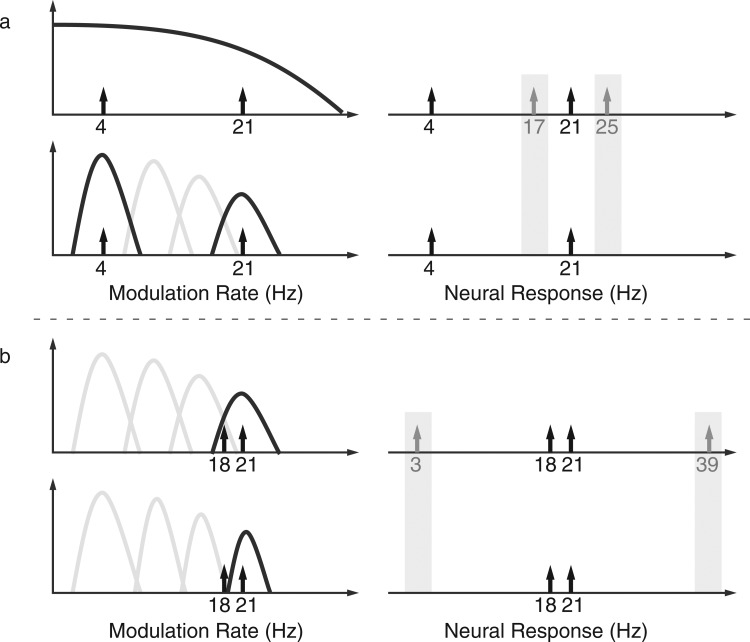Figure 1.
Cartoon of the effects of auditory modulation filtering on possible resultant neural nonlinearities, as a function of modulation rate and response frequency. (a) Simultaneous presentation of modulations with well-separated rates (e.g., 4 Hz and 21 Hz) should produce responses that include nonlinear interaction terms (e.g., at the difference and sum frequencies of 17 Hz and 25 Hz) if they are processed by the same (broad) neural filter. If they are processed by distinct bandpass filters, however, there would be no within-filter interaction to produce such nonlinear interaction terms. (b) Analogously, simultaneous presentation of modulations of nearby rates (e.g., 18 Hz and 21 Hz) should produce nonlinear interaction terms if they are processed by the same bandpass neural filter (e.g., at the difference and sum frequencies of 3 Hz and 39 Hz), but not if they are processed by still narrower filters.

